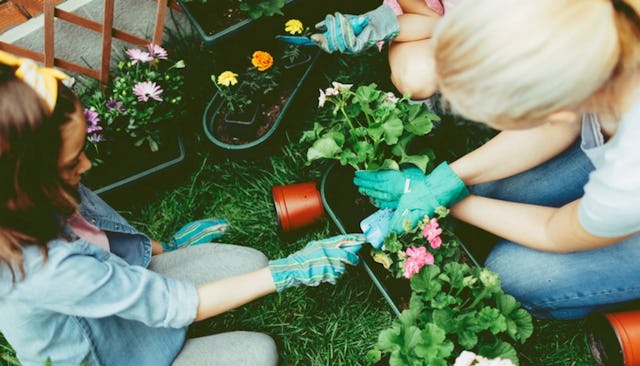You Don't Have To Be A Grandma (Or A Farmer) To Be A Gardener

If you’ve ever been to my house then you would notice that in all the windows are small potted plants and next to them little tea saucers with small piles of seeds. After years of training, I now know that when I do any of my husband’s laundry I must check his pockets very carefully because there will inevitably be a few seeds of some interesting plant he found in the forest hidden away in the lining of a pocket. He was born a gardener.
But I was not. For many years, I was the designated murderer of anything that requires chlorophyll to live. No houseplant made it past a month in my care. I even killed a cactus once.
Gardening, as it turns out, can be as cheap or expensive, simple or complex, as you want to make it. You don’t need to be a farmer with expansive land — or even own any land at all, for that matter. And you don’t need to be a grandma with a lifetime of Farmer’s Almanac style tricks and old wives’ tales about how herbs work or ways to ward off pests with strategically planted marigolds and mint.
If you want to get started with gardening with your kids, or for yourself, you can grab a few old yogurt containers, poke some holes in the bottom for drainage, fill with potting soil that you can grab from any hardware store, and let your kids toss in some seeds. Water the soil, place in a sunny window — and wait. I suggest starting with something fun like zinnias or even radish, these grow fast and are fun to watch.
If you rent an apartment and have no backyard, you can create a simple container garden with lots of small pots. Some folks even take container gardens to the next level by using a wooden palate (think Pinterest project) and filling the gaps in between the slates with yogurt containers of soil and seeds. When the plants start to grow and create a barrier so that the soil won’t fall out, you can hang the palate on a sunny wall inside or outside and have a really cool jungle effect. Plants that work well for this kind of project are herbs like mint, basil, parsley, and sage. Nasturtiums create a waterfall-like effect and are full and lovely with brightly colored flowers that you can actually eat (they taste peppery, add them to salads).
If you have a backyard big enough for some ambitious projects, you can try checking out books like Roots, Shoots, Buckets & Boots: Gardening Together With Children by Sharon Lovejoy. The colorful pages are filled with great science facts about plants and insects for kids, and the fun and imaginative projects include things like a pizza garden where kids can grow all the toppings they will need to make their own pizza. There is even a fabulous (and unbelievably simple) fort project that creates a secret hideout for kids to play in.
The best part about gardening is that it gives parents a hands-on opportunity to explore science with their kids. From learning how seeds grow into plants to incorporating bugs (try creating a butterfly terrarium!), parents can take these small and fascinating moments of rapt attention from children and use it to lay down some awesome knowledge about how nature works.
But be careful, gardening can be a gateway experiment to other more complicated things like physics and math. For example, my kids have turned into budding gardeners thanks to my husband’s love of nature (and my willingness to learn how to stop killing our poor houseplants). They have started taking a keen interest in learning other cool science based things like how to build and use a compost bin, how to build and set up bird houses, and at one point, with the help of a professional, my oldest son even saved a swarm of bees.
You just never know what will happen when you start mixing seeds with soil, kids will ask a million questions, and if you’re willing to go down the road of curiosity with your child, will lead to some amazing projects that will lead to a lifetime of learning and passion for nature. It’s one of the things I love most about my husband, and I’m thrilled to see our children head down that path.
Gardening Tips in Small Spaces
This article was originally published on